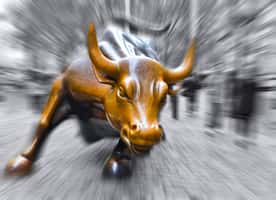The multi-decade high inflation and the Fed’s aggressive moves to curb it have increased concerns over a possible recession. The Federal Reserve, in its July policy meeting, announced its second consecutive 0.75 percentage-point interest rate increase to tame the surging inflation.
Moreover, after declining in the first quarter, the U.S. economy contracted by 0.9% in the second quarter, fueling the recession fears. Furthermore, Mayor Eric Adams contradicted President Biden’s claims that the country is doing good by commenting, “Wall Street is collapsing; we are in a recession.”
With increased fears of a possible recession, investors are increasingly moving toward steady income in the form of dividends. According to SPDR Americas, dividend funds have added $43 billion in 2022 as of late June.
Therefore, we think investors could consider fundamentally sound dividend stocks AbbVie Inc. (ABBV - Get Rating), Eli Lilly and Company (LLY - Get Rating), and Johnson & Johnson (JNJ - Get Rating) to survive a recession.
AbbVie Inc. (ABBV - Get Rating)
Headquartered in North Chicago, Illinois, ABBV discovers, develops, manufactures, and sells pharmaceuticals internationally. The company renders HUMIRA, a therapy used as an injection for autoimmune and intestinal Behçet’s diseases; SKYRIZI to cure moderate to severe plaque psoriasis in adults; RINVOQ, a JAK inhibitor for the treatment of moderate to severely active rheumatoid arthritis in adult patients.
ABBV declared a quarterly dividend of $1.41 on June 23, 2022, payable on August 15, 2022. ABBV’s $5.64 annual dividend yields 3.93% at the current share price. Also, it has a four-year average dividend yield of 4.63%. Its dividend payouts have increased at a 17.5% CAGR over the past five years.
Last month, ABBV announced that the European Commission (EC) approved oral therapy for the treatment of active non-radiographic axial spondyloarthritis in adult patients with objective signs of inflammation, as indicated by elevated C-reactive protein (CRP) and magnetic resonance imaging (MRI), who have responded inadequately to nonsteroidal anti-inflammatory drugs (NSAIDs).
Also, last month, ABBV announced the European Commission (EC) approved RINVOQ (upadacitinib 45 mg [induction dose] and 15 mg and 30 mg [maintenance doses]) for the treatment of adult patients with moderately to severely active ulcerative colitis who have had an inadequate response, lost response or were intolerant to either conventional therapy or a biologic agent.
For the second quarter ending June 30, 2022, ABBV’s net revenues increased 4.5% year-over-year to $14.58 billion. Its operating earnings amounted to $3.30 billion, while its net earnings grew 21.1% from its prior-year quarter to $924.00 million. The company’s EPS increased 11.2% year-over-year to $3.37.
The consensus EPS estimate of $3.59 for the third quarter ending September 2022 represents a 7.8% year-over-year growth. Analysts expect revenue to increase 5.4% year-over-year to $15.12 billion for the same period. The stock has gained 20.7% over the past year and 25.2% over the past nine months.
ABBV’s POWR Ratings reflect this promising outlook. The company’s overall A rating translates to Strong Buy in our proprietary rating system. The POWR Ratings assess stocks by 118 different factors, each with its own weighting.
The stock also has an A grade for Quality and a B for Value and Growth. Within the Medical – Pharmaceuticals industry, it is ranked #9 of 171 stocks. Click here to see additional POWR Ratings for Stability, Sentiment, and Momentum.
Eli Lilly and Company (LLY - Get Rating)
LLY discovers, develops, and markets human pharmaceuticals worldwide. It offers Basaglar, Humalog, Humalog Mix 75/25, Humalog U-100, Humalog U-200, Humalog Mix 50/50, insulin lispro, insulin lispro protamine, insulin lispro mix 75/25, Humulin, Humulin 70/30, Humulin N, Humulin R, and Humulin U-500 for diabetes; and Jardiance, Trajenta, and Trulicity for type 2 diabetes.
LLY declared a quarterly dividend of $0.98 on June 27, 2022, payable on September 9, 2022. LLY’s $3.92 annual dividend yields 1.19% at the current share price. Also, it has a four-year average dividend yield of 1.75%. Its dividend payouts have increased at a 12.2% CAGR over the past five years.
Last month, LLY announced that the U.S. Food and Drug Administration (FDA) had approved OLUMIANT, a once-daily pill, as a first-in-disease systemic treatment for adults with severe alopecia areata (AA), available as 4-mg, 2-mg, and 1-mg tablets.
In June, LLY announced a modified purchase agreement with the U.S. government to supply an additional 150,000 doses of bebtelovimab for approximately $275 million. The U.S. government supply of bebtelovimab, including the new purchase, is expected to meet present demand through late August 2022.
In the first quarter ended, March 31, 2022, LLY’s revenue increased 15% year-over-year to $7.81 billion. Its operating income grew 108.1% from its year-ago value to $2.40 billion, while its net income came in at $2.33 billion, up 40% from its prior-year quarter. The company’s EPS rose 41% year-over-year to $2.10.
The consensus EPS estimate of $1.95 for the third quarter ending September 2022 represents a 0.4% improvement year-over-year. Analysts expect revenue to increase 1.6% year-over-year to $6.85 billion for the second quarter ending June 2022.
The company’s shares have surged 34.4% over the past year and 34.5% over the past six months.
LLY’s strong fundamentals are reflected in its POWR Ratings. The stock has an overall A rating, which equates to Strong Buy in our POWR Ratings system. The stock also has a B grade for Stability, Quality, and Growth. Within the same industry, it is ranked #13.
In total, we rate LLY on eight different levels. Beyond what we’ve stated above, we have also given LLY grades for Value, Sentiment, and Momentum. Get all the LLY ratings here.
Johnson & Johnson (JNJ - Get Rating)
JNJ develops, manufactures, and sells various products in the healthcare field worldwide. The company’s Consumer Health segment offers baby care products under the JOHNSON’S and AVEENO Baby brands; oral care products under the LISTERINE brand; skin health/beauty products under the AVEENO, CLEAN & CLEAR, DR. CI:LABO, NEUTROGENA, and OGX brands; TYLENOL acetaminophen products; SUDAFED cold, flu, and allergy products.
JNJ paid a quarterly dividend of $1.13 on June 7, 2022. JNJ’s $4.52 annual dividend yields 2.6% at the current share price. Also, it has a four-year average dividend yield of 2.6%. Its dividend payouts have increased at a 5.9% CAGR over the past five years.
In June, JNJ announced the launch of the new J&J Satellite Center for Global Health Discovery (Satellite Center) at Singapore’s Duke-NUS Medical School, jointly established by Duke University and the National University of Singapore (NUS) as a graduate-entry medical school and research powerhouse.
For the second quarter of 2022, JNJ’s sales increased 3% year-over-year to $24.02 billion. Its gross profit improved 2.4% year-over-year to $16.10 billion, while its adjusted net earnings amounted to $4.81 billion. The company’s adjusted EPS came in at $2.59, up 4.4% from its prior-year quarter.
Analysts expect JNJ’s revenue to increase 0.6% year-over-year to $23.49 billion for the third quarter ending September 2022. The company’s EPS is expected to grow 6% year-over-year to $2.26 for the fourth quarter ending December 2022.
Moreover, it has an impressive earnings surprise history, as it surpassed the consensus EPS estimates in all of the trailing four quarters. The company’s shares have soared 1.4% over the past year and 7.2% over the past nine months.
It is no surprise that JNJ has an overall A rating, which equates to Strong Buy in our POWR Ratings system. JNJ also has an A grade for Stability and a B for Quality and Growth.
Within the Medical – Pharmaceuticals industry, it is ranked #8. Click here to see additional POWR Ratings for Momentum, Value, and Sentiment for JNJ.
Want More Great Investing Ideas?
ABBV shares were trading at $140.30 per share on Monday afternoon, down $3.21 (-2.24%). Year-to-date, ABBV has gained 6.57%, versus a -12.98% rise in the benchmark S&P 500 index during the same period.
About the Author: Spandan Khandelwal

Spandan's is a financial journalist and investment analyst focused on the stock market. With her ability to interpret financial data, she aims to help investors evaluate the fundamentals of a company before investing. More...
More Resources for the Stocks in this Article
| Ticker | POWR Rating | Industry Rank | Rank in Industry |
| ABBV | Get Rating | Get Rating | Get Rating |
| LLY | Get Rating | Get Rating | Get Rating |
| JNJ | Get Rating | Get Rating | Get Rating |






